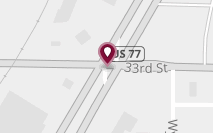As certain areas of Oklahoma continue to grow, maybe you consider developing commercial property in an area where doing so makes sense. You will more than likely begin looking for tenants who want to take advantage of the business opportunities in the area.
The question then becomes about what type of leases you will offer your commercial tenants. The kind you pick will dictate many aspects of your relationship with your tenants. Below is a general discussion of the three most common types of leases.
Most people have heard of the net lease.
You can charge your tenants a lesser amount for the base rent with these leases and then add in certain costs that you would otherwise pay. You can choose from a variety of net leases:
- Single net lease: This lease includes the base rent and the tenant’s pro rata share of the property taxes. You pay all other costs except for janitorial services and utilities, which remain the responsibility of the tenant.
- Double net lease: This lease includes the base rent, the tenant’s pro rata share of the property taxes and a pro rata share of the property insurance. You pay all other costs except for janitorial services and utilities for the tenant’s space.
- Triple net lease: This lease includes the base rent, the tenant’s pro rata share of the property taxes, pro rata share of the insurance and common area utilities and operating expenses, or CAMS, which most often include the following:
- Property management fees
- Utilities
- Janitorial services
- Water, sewer and trash
- Parking lots
- Landscaping
- Fire sprinklers
- Other common area services
- Absolute triple net lease: This lease makes the tenant responsible for everything.
The net lease is often seen as being the most landlord friendly since it requires the tenant to share responsibility for the building. Rent may vary from month to month depending on the cost of the added expenses.
Then there is the gross lease.
This lease includes everything in one payment. The only additional charges the tenant is responsible for are his or her own property taxes and insurance. The responsibility for the building lies with the landlord.
Finally, the modified gross lease.
You may also hear this lease referred to as the modified net lease. Essentially, it’s a hybrid between the two leases above. You and your tenants would negotiate an amount for CAMS, taxes and insurance that you add to the base rent. The tenant then pays a fixed amount for rent regardless of the monthly costs of the add-ons to the landlord. The tenant remains solely responsible for utilities and janitorial services.
Which would work best for you?
It might be easy to say that a net lease would work best, but if the market is competitive, you may need to be willing to look at other lease structures to ensure that you have the occupancy you need. Numerous business and legal issues require consideration before you make your choice, and an experienced real estate lawyer can help you make the decision, as well as help you negotiate with your tenants, draw up the leases and oversee their execution.
